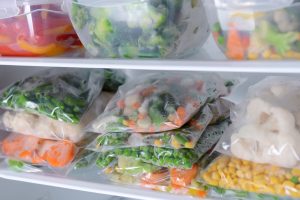To say that COVID-19 transformed daily life would be an understatement. Few, if any, aspects of life were untouched once the virus hit.
One aspect of daily life that changed considerably is the way people shop for food.
As recommendations to remain home and out of crowded places spread, many people felt that shopping in bulk, or at the very least, meal-planning and buying necessities for a few weeks at a time, would reduce the number of trips they needed to make to supermarkets or small food stores. In addition, due to shortages of popular foods, many people have purchased items they did not necessarily need in anticipation that such foods may not be available in the coming weeks or months.

Large packages of meat and poultry can be broken down and frozen easily. But what about the fresh produce that many people rely on for important nutrients? Fresh vegetables only last so long, so people need to learn how to safely freeze fresh vegetables to avoid throwing them out. To freeze vegetables properly so they retain their flavor and texture, it is important to freeze them within a few hours of picking them from a garden or taking them home. Certain vegetables can be frozen in their raw state.
The texture might change slightly upon thawing, but they will remain flavorful. Other vegetables may require blanching before freezing. Blanching requires scalding vegetables in boiling water or steam for a brief time. Blanching helps stop the enzymes that cause vegetables to decay, a process that can occur even in frozen storage. Items that do well with blanching include spinach, kale, winter squash, and broccoli, according to HGTV.com.

Another way to freeze produce is to remove the air that can compromise the food. You can do so by filling containers or bags and pushing out the extra air. Vacuum sealers can work to remove the air and help preserve items in the freezer longer; otherwise, use a tray pack method to freeze items. Place chilled and drained blanched vegetables in shallow trays or pans. Freeze them until the vegetables are firm and then quickly fill freezer bags or containers, says the National Center for Home Food Preservation.
Remember to label and date containers so items can be used in the order in which they were packed. Most vegetables maintain high quality for eight to 12 months at 0 F or lower, according to the University of Georgia.
Freezing fresh vegetables is an option when stocking up on essentials. Flavor and texture can be retained and items will not need to be discarded before they can be eaten.



